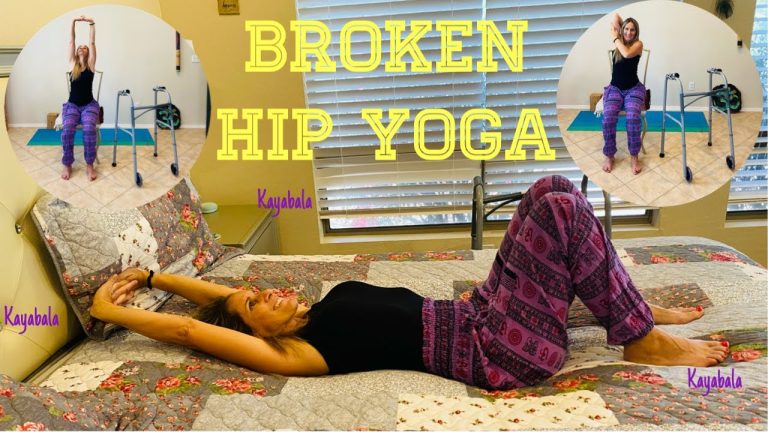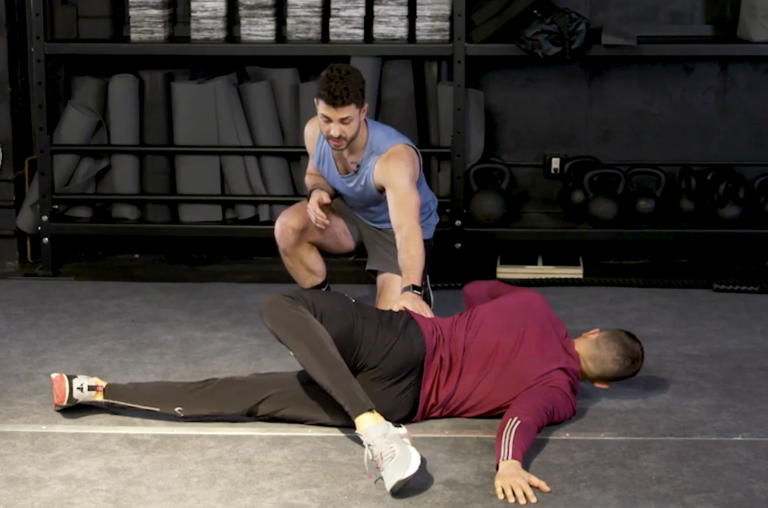What Exercises Should Be Avoided After Hip Replacement: Expert Recommendations
Hip replacement surgery can be life-changing for those suffering from chronic hip pain and limited mobility. However, the road to recovery requires careful consideration and awareness of certain precautions, especially when it comes to exercise.
In this article, we will unveil the exercises that should be avoided after hip replacement surgery to prevent potential complications such as dislocation. From consulting with a physical therapist to gradually increasing your activity level, we will explore the steps you can take to regain strength, improve balance, and ultimately reclaim your independence.
So, lace up your sneakers and join us on this journey to optimal post-surgical healing.
what exercises should be avoided after hip replacement
After undergoing hip replacement surgery, there are certain exercises that should be avoided to prevent dislocation of the new hip joint. These include hip flexion beyond 90 degrees, crossing the operated leg over the other, and walking pigeon-toed.
It is important to consult a physical therapist to identify safe exercises as certain ones done during physical therapy can carry a risk of dislocation. Signs of hip replacement dislocation may include intense pain, popping sound, difficulty walking, feeling of hip joint “catching,” inability to move the hip joint, and uneven leg length.
Precautions typically need to be followed for about 90 days, but can vary. Lifetime precautions may include avoiding excessive hip flexion and twisting motions.
Other activities to avoid include high-impact, repetitive activities like running and jumping. It is advisable to consult a healthcare provider for specific lifetime precautions.
It is recommended to start with 20-30 minutes of exercise 2-3 times a day, gradually increasing as strength improves. Initially, focus should be on regaining balance and walking without assistance in the first six weeks, followed by regaining full strength, improving endurance, and gaining independence.
Certain exercises should be avoided, including those that strain the hips, some exercise machines, and bending the body in certain positions. Recommended exercises after hip replacement include ankle pumps, straight-leg raises, standing knee raises, and standing hip extensions.
Riding a stationary bike is also advisable for maintaining muscle tone and flexibility. Low-impact cardiovascular exercises like swimming are recommended.
It is important to avoid high-impact activities and activities with a risk of falling. Applying heat before exercise can help increase range of motion, while using ice after exercise can reduce pain or swelling.
If muscles ache, it is best to cut back on exercise rather than stopping completely.
Key Points:
- After hip replacement surgery, exercises that should be avoided are:
- Hip flexion beyond 90 degrees
- Crossing the operated leg over the other
- Walking pigeon-toed
- It is important to consult a physical therapist to identify safe exercises, as some exercises done during physical therapy can carry a risk of dislocation.
- Signs of hip replacement dislocation include:
- Intense pain
- Popping sound
- Difficulty walking
- Feeling of hip joint “catching”
- Inability to move the hip joint
- Uneven leg length
- Precautions typically need to be followed for about 90 days, but can vary. Lifetime precautions may include avoiding excessive hip flexion and twisting motions.
- Other activities to avoid after hip replacement include:
- High-impact, repetitive activities like running and jumping
- It is advisable to consult a healthcare provider for specific lifetime precautions.
- Recommended exercises after hip replacement include:
- Ankle pumps
- Straight-leg raises
- Standing knee raises
- Standing hip extensions
- Riding a stationary bike
- Low-impact cardiovascular exercises like swimming.
Sources
https://www.verywellhealth.com/activities-to-avoid-after-total-hip-replacement-2696463
https://www.livestrong.com/article/391465-exercise-machines-to-avoid-for-hip-replacements/
https://physicaltherapyproductreviews.com/exercises-to-avoid-after-a-total-hip-replacement/
https://larsonsportsortho.com/hip-replacement-exercises-to-avoid/
Check this out:
💡 Pro Tips:
6. Be cautious when performing exercises that involve deep squats or lunges, as these can put strain on the hip joint.
7. Avoid exercises that require sudden or jerky movements, as these can increase the risk of dislocation.
8. It is important to listen to your body and stop any exercise that causes pain or discomfort in the hip area.
9. Incorporate exercises that strengthen the muscles around the hip joint, such as hip abductions and side leg lifts, to provide better stability and support.
10. Consider using assistive devices, such as crutches or a walker, during the initial stages of recovery to avoid putting excessive strain on the hip joint.
Post-Surgery Precautions To Avoid Dislocation
After undergoing hip replacement surgery, it is crucial to take certain precautions to prevent the risk of dislocation. Dislocation occurs when the artificial joint comes out of its socket, causing intense pain and discomfort.
Therefore, it is vital to adhere to the following guidelines:
-
Avoid hip flexion past 90 degrees: Flexing your hip too far can put excessive strain on the artificial joint and increase the risk of dislocation. It is important to be mindful of your movements and avoid activities that involve excessive bending at the hip.
-
Crossing the operated leg over the other one: Crossing your operated leg over the other leg can cause an unnatural twisting motion in the hip joint, potentially leading to dislocation. Make it a habit to sit and stand with your legs slightly apart to avoid crossing them.
-
Walking pigeon-toed: Walking with the toes pointed inward can increase the stress on the hip joint, potentially leading to dislocation. It is advisable to maintain a natural gait with the toes pointing forward while walking.
Dislocation Signs: Recognizing And Responding
Recognizing the signs of a dislocated hip replacement is vital for prompt medical attention and treatment. The following symptoms may indicate a dislocation:
-
Intense pain: Dislocation often causes severe pain in the hip area, making it difficult to bear weight or move the leg.
-
Popping sound: Some individuals may hear a popping or clicking sound when a dislocation occurs, which can be a clear indicator of the problem.
-
Difficulty walking: Dislocation may interfere with your ability to walk or put weight on the affected leg. You may experience a noticeable limp or instability while walking.
-
Feeling of hip joint “catching”: Some individuals may feel as though their hip joint is catching or locking up, making movement uncomfortable or restricted.
-
Inability to move the hip joint: Dislocation can limit your range of motion in the hip joint, making it challenging to perform basic activities like bending or extending your leg.
-
Uneven leg length: A dislocated hip replacement may lead to a noticeable difference in leg lengths, causing an imbalance while standing or walking.
If you experience any of these symptoms, it is essential to seek immediate medical attention. Dislocations should be promptly addressed by a healthcare professional to minimize further complications.
Time Frame For Precautions: Following Guidelines
Following hip replacement surgery, precautions need to be taken for approximately 90 days. However, it is essential to note that the specific duration may vary depending on individual circumstances.
It is crucial to consult with your healthcare provider or physical therapist to determine the appropriate timeframe for following these precautions.
During the initial three to four months after surgery, rapid recovery is expected. However, it is important to understand that improvements may continue at a slower pace for up to a year or longer.
It is advisable to have realistic expectations and remain committed to rehabilitation and exercise during this period.
Long-Term Precautions: Lifetime Considerations
While the initial precautions typically last for a few months post-surgery, there are certain lifetime precautions that individuals with hip replacements should consider. These precautions aim to protect the artificial joint and minimize the risk of dislocation in the long run.
Some lifetime precautions include:
-
Avoiding excessive bending of the hip joint: Bending the hip beyond recommended limits can strain the joint and potentially lead to dislocation. It is crucial to be mindful of your movements and avoid activities that involve excessive hip flexion.
-
Avoiding twisting motions: Twisting motions can place stress on the hip joint and increase the risk of dislocation. It is important to avoid sudden or forceful twisting movements and choose activities that promote joint stability.
-
Consulting with a healthcare provider: To determine the necessary lifetime precautions based on your individual circumstances, it is recommended to consult with your healthcare provider or orthopedic specialist. They can provide tailored recommendations to ensure the continued health and stability of your hip replacement.
Gradual Progress: Exercise Routine Development
Recovery and rehabilitation after hip replacement surgery involve a gradual progression of exercises and physical activities. Here is a suggested timeline for developing your exercise routine:
-
Initial six weeks: Focus on regaining balance and walking without assistance. Start with gentle exercises such as ankle pumps and straight-leg raises under the guidance of your physical therapist.
-
After six weeks: Gradually shift the focus to regaining full strength, improving endurance, and gaining independence. Your physical therapist will introduce more challenging exercises, such as standing knee raises and standing hip extensions, to further develop your hip and leg muscles.
-
Ongoing maintenance: Once you have completed the initial recovery phase, it is crucial to maintain a regular exercise routine to promote strength, flexibility, and overall joint health. Consult with your healthcare provider or physical therapist to determine which exercises and activities are suitable for your long-term well-being.
Safe And Effective Exercises: Recommendations And Avoidances
While certain exercises can aid in the recovery and strengthening of the hip joint after surgery, it is equally important to avoid exercises that can strain the hips or jeopardize the integrity of the artificial joint. Here are some recommended and avoidable exercises:
Recommended exercises:
-
Ankle pumps: This exercise involves moving your foot up and down to improve blood circulation, muscle strength, and flexibility in the ankle joint.
-
Straight-leg raises: Lift your leg straight off the ground while lying down to strengthen the muscles around the hip joint.
-
Standing knee raises: Stand tall and lift your knee towards your chest, engaging the muscles in your hips and thighs.
-
Standing hip extensions: Stand facing a support surface and extend your leg backward while keeping your back straight, targeting the muscles in the hip and buttocks.
-
Riding a stationary bike: This low-impact exercise is excellent for maintaining muscle tone and flexibility in the hip joint. Adjust the resistance as needed to challenge your muscles within a comfortable range of motion.
Avoidable exercises:
-
High-impact activities: Activities such as running, jumping, or vigorous aerobics can place excessive stress on the hip joint and increase the risk of dislocation.
-
Exercise machines that strain the hip joint: Some exercise machines, such as the leg press or leg extension machines, can place substantial strain on the hip joint. It is advisable to avoid these machines during your exercise routine.
-
Bending the body in certain positions: Movements that involve excessive bending or twisting at the hip joint should be avoided to minimize stress on the artificial joint.
Remember to apply heat before exercise to increase range of motion, and use ice after exercise to reduce pain or swelling. If you experience muscle aches, it is recommended to cut back on exercise intensity but not completely stop, as consistent physical activity is vital for a successful recovery.
In conclusion, taking precautions after hip replacement surgery is crucial to avoid dislocation. Adhering to specific guidelines, recognizing dislocation signs, and following a tailored exercise routine can contribute to a successful rehabilitation process.
It is essential to consult with healthcare professionals, including physical therapists and orthopedic specialists, to develop a safe and effective exercise routine that suits your individual needs.







